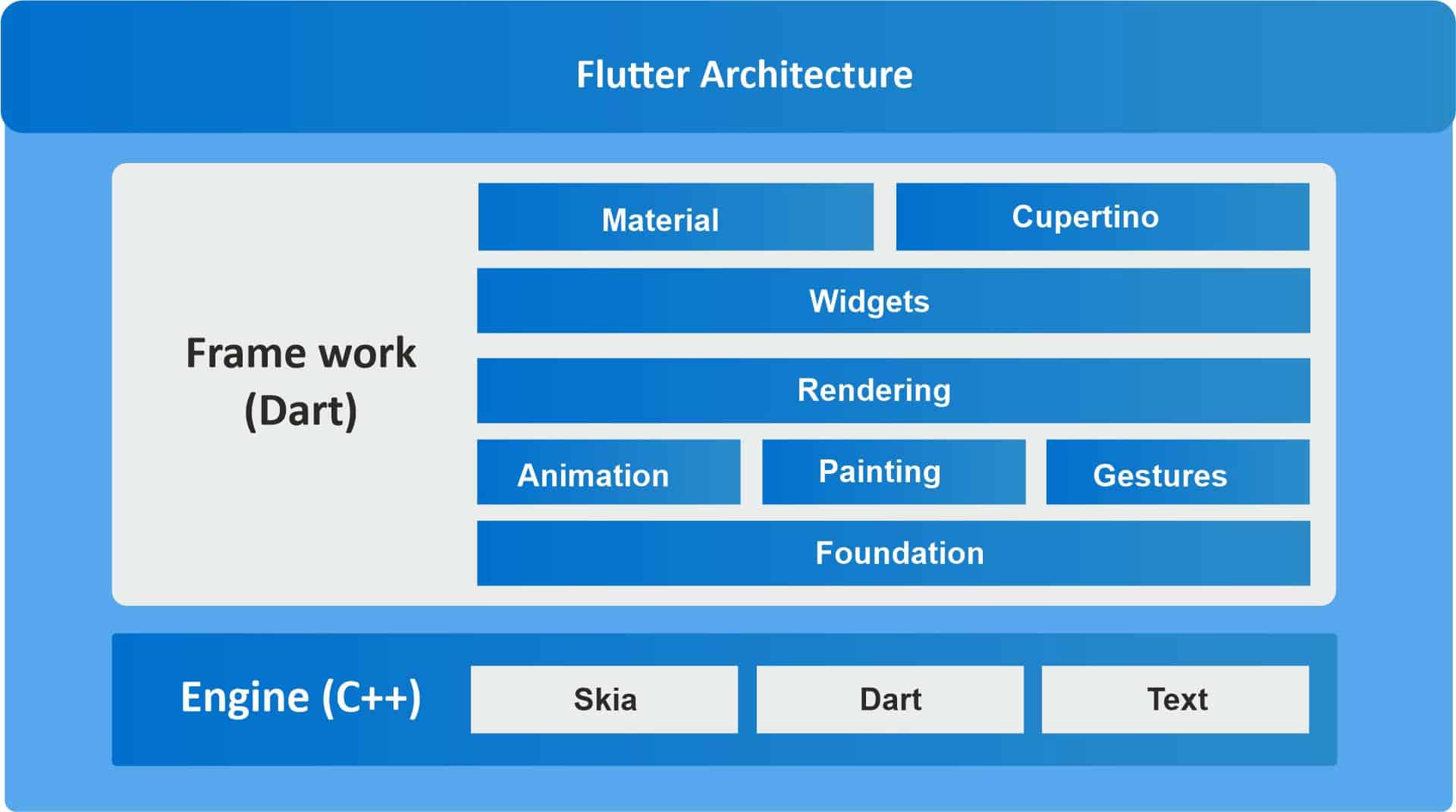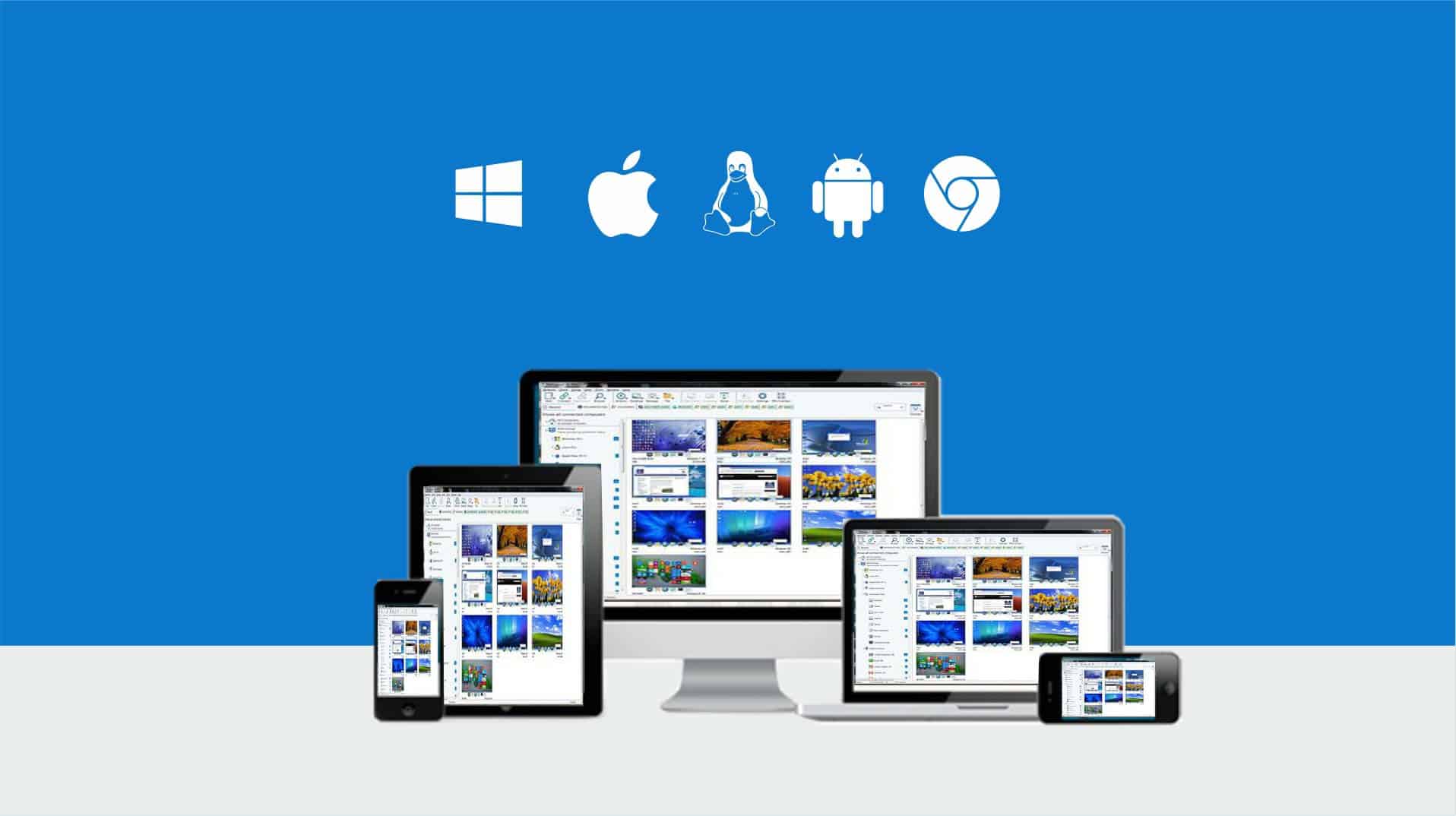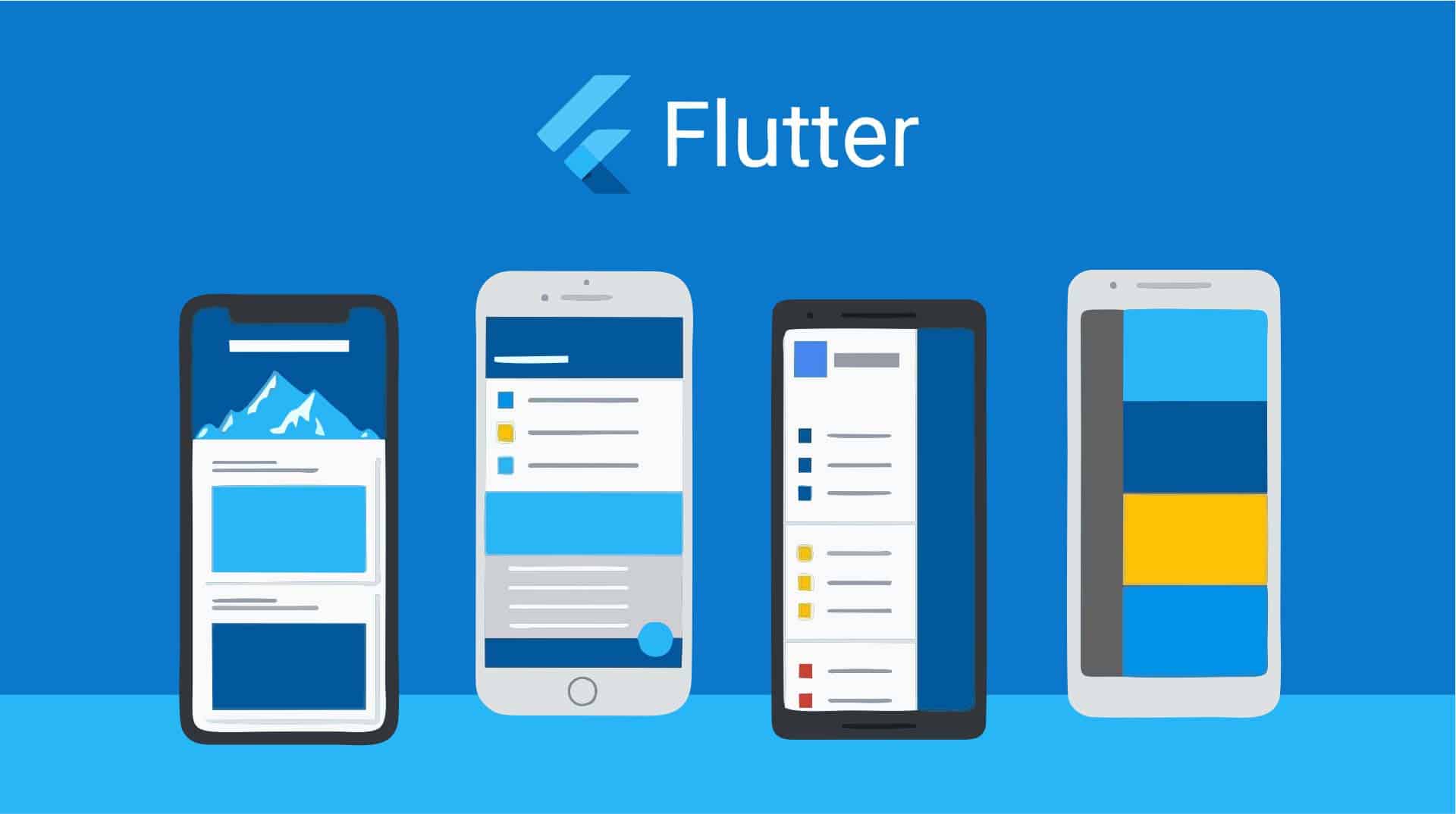Today, consumer interactions with brands primarily happen digitally, and a significant percentage of those are mobile-first. As businesses continue to build their digital presence felt, the world of app development has grown exponentially.
That brings us to the dilemma app developers and business decision-makers that presents itself the onset of an app development project. Whether to put in considerably more work for native apps and deliver better user experience, or compromise on user experience and go for a more convenient and cost-effective cross-platform development.
Now, there's a way out – Flutter
"Flutter is an open-source project with a BSD-style license and includes the contributions of hundreds of developers from around the world. In addition, there's a vibrant ecosystem of thousands of plug-ins."
Flutter does not replace the traditional app models for building mobile apps offered by Apple and Android. Instead, it gives you a tool, which can either be embedded into an existing app or used to create an entirely new app.

What is Flutter?
Flutter is an open-source UI software development kit built by Google using C, C++, Dart, and Skia. It can be used for multi-platform app development across Android, iOS, Windows, Mac, Linux, Google Fuchsia, and the web. As it is created using Skia – a 2D rendering engine – it can only implement 2D apps at present. However, Google has plans to develop an optimized 3D API in the long run.
Why Use Flutter?
Flutter was created to enable the development of Android and iOS apps from a single codebase using a modern, reactive framework. Since its official release in December 2018, it has managed to develop a fan base in the mobile app dev world. Here are a few reasons why:
Unbound by the Limitations of Traditional Cross-platform Approaches
Making multiple versions of identical products has been the bane of mobile app development for a long time. The alternative, until recently, has been the effort to find and adopt truly effective cross-platform approaches that work for the growing demand for mobile apps. However, even with the best cross-platform approach, in reality, the user experience typically does not match up to that of native applications, because often the UI is built in JavaScript and run through just-in-time compilers.
Flutter's 'write once' approach gives you the advantage of creating a high-performance native experience with a single codebase. An app made through Flutter is compiled ahead-of-time making it machine binary executable. This helps overcome several usual challenges that come with cross-platform development approaches.
Frontend & Backend with a Single Code
Flutter uses a single language (Dart) to perform the job and use a reactive framework, unlike other frameworks, where there are separate files for frontend (views), which are referenced by backend (JS for React, Java for Android, C# for Xamarin).
One of Flutter's key component languages – Dart – itself has been built several popular features of other languages without compromising on the familiarity of those languages. Built with a focus on ease of use, Dart makes a lot of everyday development tasks much easier.
Faster Development and Reduced Costs
Flutter's hot reload/restart or stateful hot reload feature allows developers to view changes being made in almost real-time. They can not only see the changes made to the state of an app less than one second but also changes to the app structure in under ten seconds, which significantly improves resource productivity and efficiency.
Additionally, unlike native app development, a project won't need separate and specialized teams for each operating system, which further reduces operational costs.
Expressive and Compliant UI

In Flutter, the cross platform, open source mobile SDK, everything is a widget – from the app bar to drawer, snackbars, scaffold, and so on. More importantly, these fully customizable widgets can be wrapped inside another with ease, which helps ensure excellent user experience irrespective of the platform they are running on.
Furthermore, not only can you build expressive user interfaces with Flutter's built-in widgets look native to Android (Material Design) and iOS apps (Cupertino). The result is apps with smooth, natural scrolling, rich motion APIs, and platform awareness. What's more, these can also reuse them in your code, in case further customization is required in the future.
Easy to Manage Applications
In today's market, where customer behavior and expectations change fast, businesses have to make frequent changes and alterations to their offerings. Flutter's widget-based framework allows easy customization and management of applications. The developer has to develop a single codebase and deploy it for the changes to reflect in both iOS and Android.
Conclusion
Using a single language, a single framework, and a single set of libraries for all of your UI (irrespective of whether the UI is different for each platform or broadly consistent), Flutter helps lower app development and maintenance costs, efforts, and delivers native experiences. A growing community of developers worldwide is exploring and adopting Flutter to make impressive apps for many leading companies such as Alibaba, Groupon, Capital One, Tencent Group, Square, eBay, BMW, and more.
To learn more about how we can help you build impressive apps using Flutter, contact us today!


